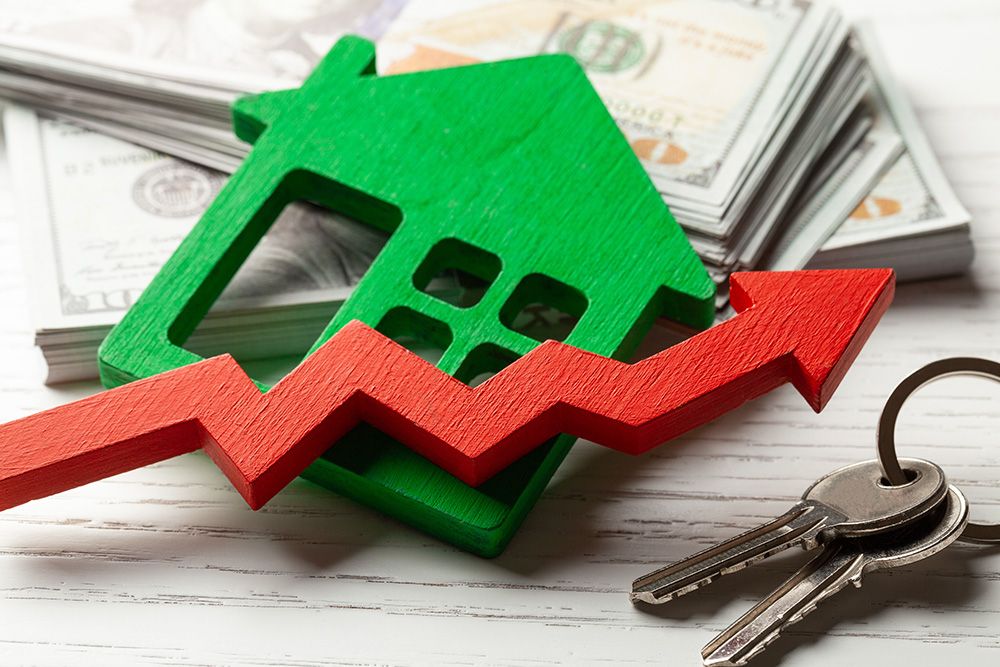Pros and Cons of An Adjustable-Rate Mortgage

With mortgage rates rising rapidly and coming off years of record lows, many potential homebuyers are looking for ways to beat the situation. One available option is an adjustable-rate mortgage. An adjustable-rate mortgage has pros and cons, and both have to be carefully weighed before making a decision.
An adjustable-rate mortgage is also known as an ARM. These home loans have an interest rate that adjusts over time based on what’s happening with the market. These loans will often begin with a lower interest rate than a comparable fixed-rate mortgage, and the interest rate doesn’t stay the same forever.
Your monthly payment can fluctuate after your initial period.
A fixed-rate mortgage offers predictability and certainty because, for the life of the loan, the interest rate stays the same, regardless of what’s happening with the market.
An ARM, by contrast, can become more expensive or less expensive.
There are two periods with an ARM. There’s a fixed period, usually the first 5, 7, or perhaps ten years of the loan. During this set period, your interest rate doesn’t change. Then, there’s an adjustment period. Your interest rate during the adjustment period can go up or down based on changes in the benchmark.
Mortgage rates are influenced by a range of factors, including personal factors like your credit score and broad factors such as economic conditions. You might get a teaser rate upfront that’s much lower than the rate you could pay later on in the life of the home loan.
The benchmark in your ARM loan would be the basis of your rate. The contract may name the rate benchmark the U.S. Treasury or the secured overnight finance rate (SOFR). The named benchmark will, at some point in the life of your loan, be the starting point to calculate resets.
The benchmark is used, and the loan is priced at a markup or margin. The margin applied to your ARM will depend on your credit history. A rate cap may be in place with an ARM, which would be the maximum interest rate adjustment your loan would allow at any particular time.
The Pros of Adjustable-Rate Mortgages
Adjustable-rate mortgages can be a good option if your initial goal when buying a home and getting a loan is the lowest interest rate. Your teaser rate isn’t forever, but you’ll get lower initial payments, so you’ll improve your cash flow. You might also be able to put more toward your principal balance every month.
If you’re planning to move fairly soon after buying a home, you might not have to worry about the adjusting interest rate. An ARM can be a good option for someone buying a starter home. You may have plans to upgrade, so you can sell your home before the fluctuation of the interest rates, which keeps your risks pretty low with this type of loan.
When you’re paying less monthly, you have more flexibility in your budget to meet other financial goals.
If you think you’re moving somewhere that you won’t stay for more than five years, an ARM is often the best option.
The Cons of an Adjustable-Rate Mortgage
The biggest downside of this type of mortgage is that you’re taking a risk that your interest rate will go up. That’s highly likely, meaning eventually, your monthly payments will increase. It’s hard to predict what your financial situation will be in the future, and you might at some point find it’s a struggle to make your monthly payments if they’re higher.
There’s also an inherent sense of uncertainty that can cause anxiety for some buyers.
Finally, you also have to consider the risk that if you are planning to stay in your home for five years or fewer, you may not be able to sell it before your rate adjustment. If you’re in an ARM situation and can’t sell it, an alternative would be to refinance to a fixed-rate loan or maybe a new adjustable-rate mortgage.